There is a fall fishing phenomenon that has existed for a long time now that is anticipated by plenty of hard-core anglers from both Canada and the USA. It normally starts in October and runs right into December. Of course, as per the title of this piece, we are talking about the annual Bay of Quinte fall Walleye migration in the province of Ontario.
By the way, if you want to read about that great cover image Walleye, check out my piece called Reaching Deep For Walleye which we shot last fall on the Bay of Quinte.
MY FALL QUINTE HISTORY
I remember back many years ago when I used to fish well into November with my long-time fishing pal Mike Burriss. Back in the day, it was strictly Walleye, nowadays, we’ll try for anything as long as it’s not frozen over. Our old Walleye deal was to grab a bucket of mud minnows and head out to either the Long Reach or the Telegraph Narrows, both areas which are not far from my old hometown of Napanee.
Depending on the wind strength and direction, we would set up for a series of drifts, dragging our jig and minnow combinations. For the most part, we did quite well but as time passed on, the fishing seemed to get tougher and tougher.
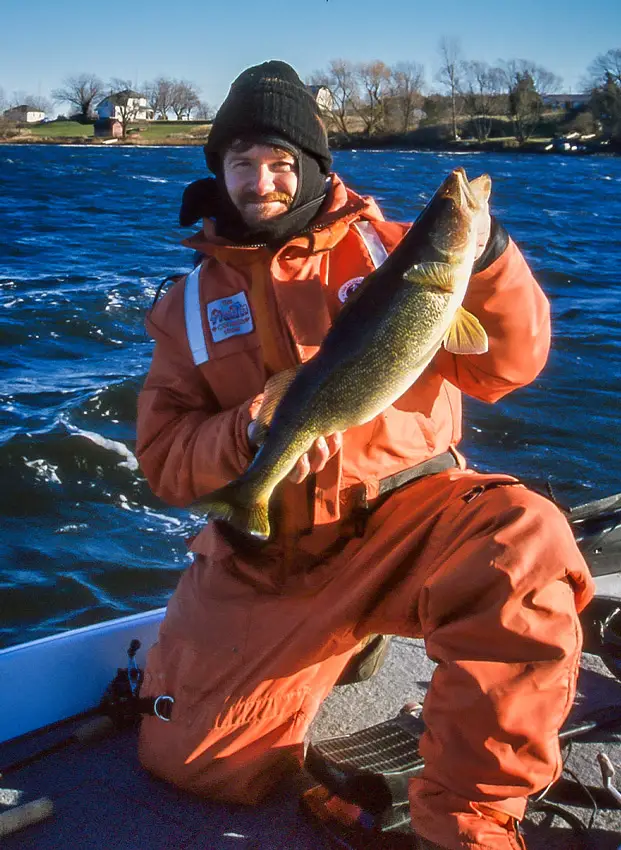
By the end of my prime jigging time, I’d be hard-pressed to get even a few of those typical fall fish in the 5-8-pound range. It was to the point of vertical jigging in 30+ feet of water for little cigar-sized Walleye with the odd giant (usually 10 pounds or more) mixed in. Those big ones made for great pictures and stories, but it was a long day for maybe one fish.
Then something happened.
MY TURNING POINT
I was in Moon’s bait shop in Deseronto picking up my usual couple-dozen minnows when a guy named Tom Gustar came up to me and asked how I have been doing “jigging” up my Walleye in the reach. I told him and he kind of shook his head and suggested I needed to troll as he was catching loads of BIG Walleye. Of course, when I hear stories like this, the doubt factor immediately pops in. After all, we would only see the odd big fish, and as well, who the hell was Tom Gustar?
Well, let me tell you about Tom. At that time, he was one of the only, if not the only Canadian that was actively fishing on the PWT better known as the Professional Walleye Tour. They covered mostly US waters if I remember correctly. For Tom, these were good learning experiences on a variety of waterbody types away from home (Ontario).
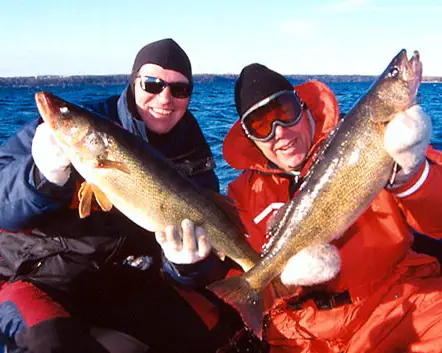
One of the greatest techniques Tom picked up while touring was refined trolling tactics. Not just dropping a line back at an unknown distance. He was dropping lines back at precise distances and he was spreading his lines out to cover more water.
Every time Tom saw me, whether near Quinte or in the Greater Toronto Area, he’d ask “when are fish fishing together?”
Well, it finally happened. I was going to call this big dude’s bluff. Loads of 10-pounders… yeah right!
MY FIRST LATE FALL TROLLING EXPERIENCE
I’ll always remember that first time Tom got me out on the water in his boat. We launched and he looked at the conditions and said “it’s gonna’ be a good day”. That’s it. Nothing about what we were going to use, trolling tactics, etc.
Once we started to set out our spread, however, my mouth couldn’t stop spewing questions.
This is the first time I had ever seen little inline planer boards. I found them intriguingly awesome. Something different and if they worked, a new tool for me. Well worked they did. No sooner did we have our two lines out and set did one of the boards start ripping backward. “There you go, grab the rod”
That first fish surprised us at being a big Northern Pike. Big for Quinte that is. Probably around 15lbs. Of course, I was freaking out (I love big Pike) and even Tom cracked a bit of a smile as he hadn’t seen many there at that time as well. Trust me though, he was as disappointed as he was surprised since his main deal there was Walleye.
Not to fret, the Walleye came soon after. And man did they come!
It was then that I knew Tom wasn’t bragging about his fall trolling tactics to me, he was teasing me in order to get me out there and show me his discovery. And what a discovery he had, ALL TO HIMSELF BTW!
Tom and I went on to returning season after season to enjoy this Walleye phenomenon and even shot a Fish’n Canada episode there.
Here is an article I did back in 2007 with an old buddy where we fished the conditions and caught a couple of mules… around 13lbs each!
ALL GOOD THINGS MUST COME TO AN END
I guess I could use that saying of “all good things must come to an end” but that would only be in a selfish term since Tom and I as well as a handful of our buddies had this fishery all to ourselves. The fact is, this fishery still exists, however it is far from a secret. On a normal late fall fishing day near the Picton area of Ontario, 30 – 50 boats will be trolling along, all dragging cranks behind planer boards or downriggers. All searching for that personal best Walleye.
MODERN DAY FALL QUINTE WALLEYE
The biggest difference that we have today vs “the good ole’ days” on this fishery is the pressure on the fish. Back in my Tommy years, the Walleye might have been a bit boat shy, however, they soon got over that big overhead shadow when the right presentation drifted by their wheelhouse.
Now, the combination of a lot of boat traffic as well as ultra-clear water, makes these fish wary. To the point of many just will not bite!
LATE FALL WALLEYE FISHING GEAR
Again, back in the day, our bait choices for late season Bay of Quinte Walleye were simple and effective. Mann’s Stretch 15+, 20+ and even 25+ crankbaits worked extremely well. If they did not work, then a Cotton Cordell Wally Minnow (not to be confused with the Wally Diver) seemed to be the ticket. One day a perch pattern would work, the next a silver or gold would work and when all else was not working, Dr. Death to the rescue!
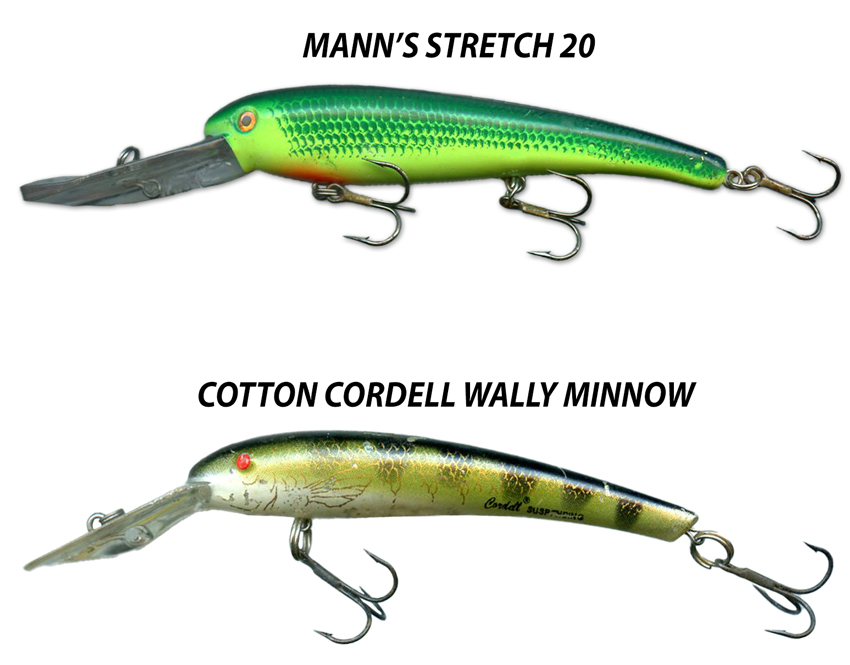
Nowadays, it seems like slightly smaller, more subtle baits have taken over. Reef Runners and Deep Tail Dancers seem to run neck and neck and Deep Husky Jerks, as well as Yozuri Crystal Minnows, are right there as well.
Bait colors too have changed. One day a simple perch pattern may work but the very next might call for a Barbie, Banana Peel, Wonderbread, Eriedescent, Grape Ape, Cranberry Crusher, Bleeding Hot Olive, Purpledescent, or the ever-popular Baby Doll.
I’m serious here people, these are legit color names and quite honestly, they could all work on late Quinte Walleye.
Since working closely with Yo-Zuri we have been experimenting a lot with sizes and especially colours of Quinte Walleye lures. As seen earlier in the article the Crystal Minnow Deep Diver Walleye is in the mix and the following colours have been pretty much awesome for our success.
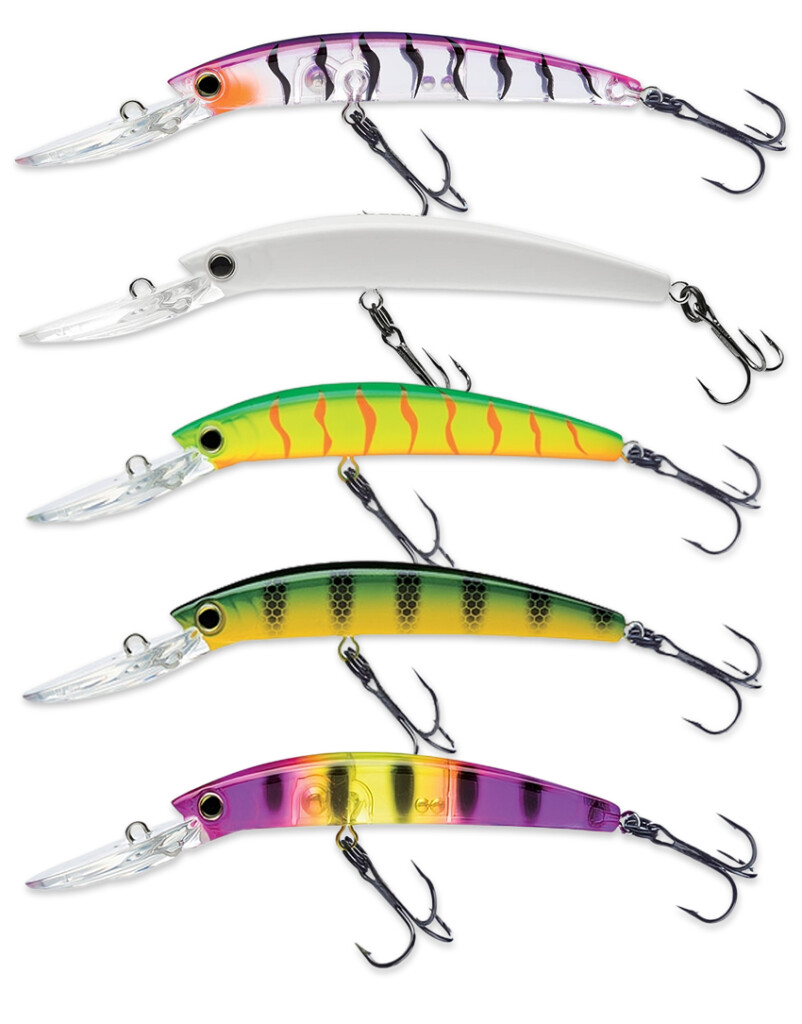
Caption: From top to bottom, Purple Tiger, White, Hot Tiger, Green Perch and Acid Perch
It’s also a good idea to pick up some suspending as well as floating crankbaits. Often when turning corners, either of these qualities can be a game-changer.
Of course, cranks aren’t the only baits to try. Some people run spoons, some try spinners and I’m sure there are live bait trollers out there as well.
It pays to experiment.
SNAP WEIGHTS
Some of these plugs run simply fine on their own without adding weight, however, there are times when an angler needs to add some weight. Maybe the lure is too small to get to the desired depth, maybe the bill on the crankbait does not pull the bait quite deep enough. Us long-line trollers of Quinte use a sneaky method of getting that extra depth all while trying not to spook the fish. We use a system called snap weights (again Tom Gustar was doing this the “odd” time when required).
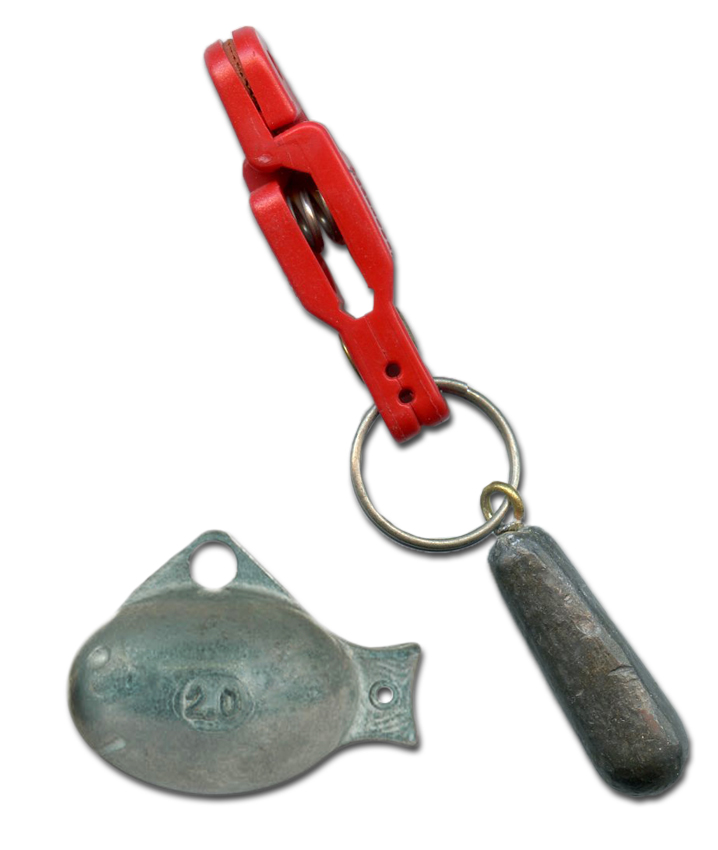
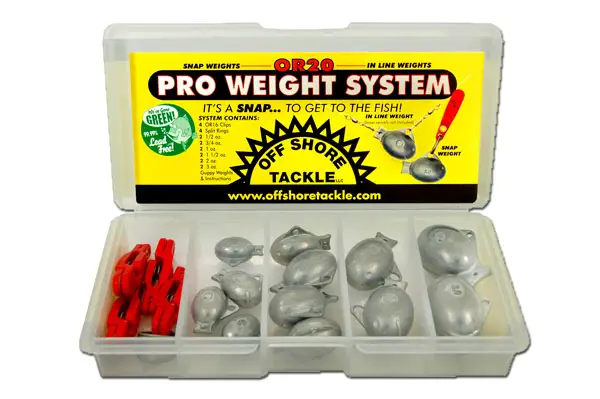
Older versions of snap weights were long and cylindrical, the latest models have “fish” shapes to look more natural to gamefish.
Let’s say the majority of fish on your finder are down 35-40 feet. Now let’s say the bait you are running is only hitting 22 feet deep max at 200 feet back and you know you need to be near 30+ feet. Adding weight is the easiest way to gain that depth. However, you may have to add 1 or 2 or maybe even 3 ounces. The question is won’t this much weight just up from the bait alter the action of the bait and possibly spook the fish?
Not with snap weights.
These ingenious devices are designed to snap onto the fishing line “well” ahead of the lure. So, if you are running that 200 feet back that I just mentioned, you snap the weight on your line after you have let 50 – 75 feet out. That puts the weight a way out in front of the bait.
Start with 1 ounce and then add if necessary.
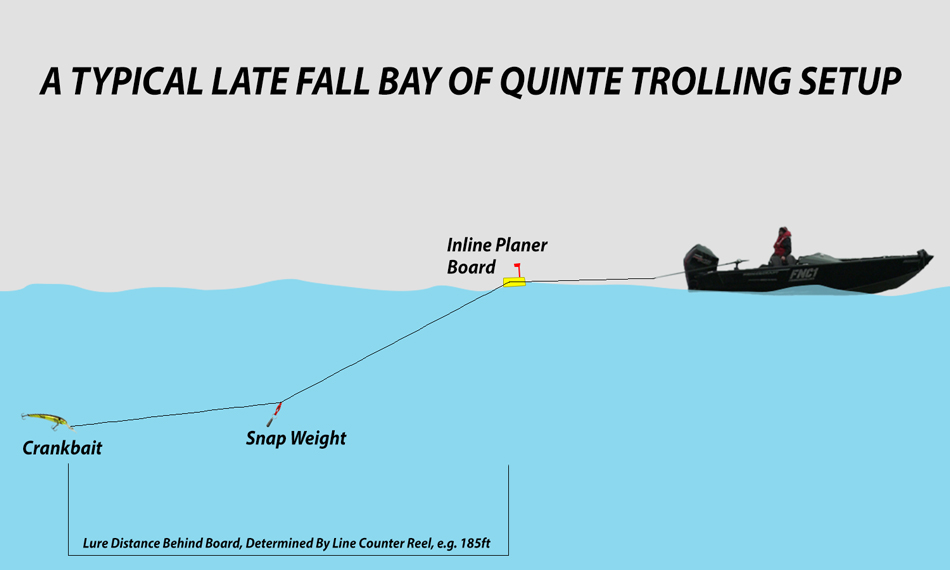
INLINE PLANER BOARDS VS MAST
For most weekend Quinte Walleye trollers, inline boards are much easier to deal with than a full mast setup. Ultimately the mast idea may possibly equate to more efficiency in that once a fish hits, the line releases, and the angler is free to fight the fish. That’s a maybe though.
With inline planer boards, the board stays attached during the first part of the fight. Once the board is to the boat, it is removed and then the angler fights the fish until either they reach the snap weight or the fish. It sounds less efficient than the mast setup but once used to the system, it becomes smooth sailing.
I personally love inline planer boards. They are small, they are convenient, and they are fun to use.

I will warn you though, the price of these little suckers might make you gulp a bit. They go for around 50 bucks each. If you want to modify the clips, flags, etc, up goes the price. Normally you will need one per angler. On Quinte past the Glenora ferry (Lake Ontario side) you can run 2 lines per angler (see below in IS IT LEGAL TO RUN TWO LINES?). The price can add up BUT… it’s so worth it when you hit a 10-plus!

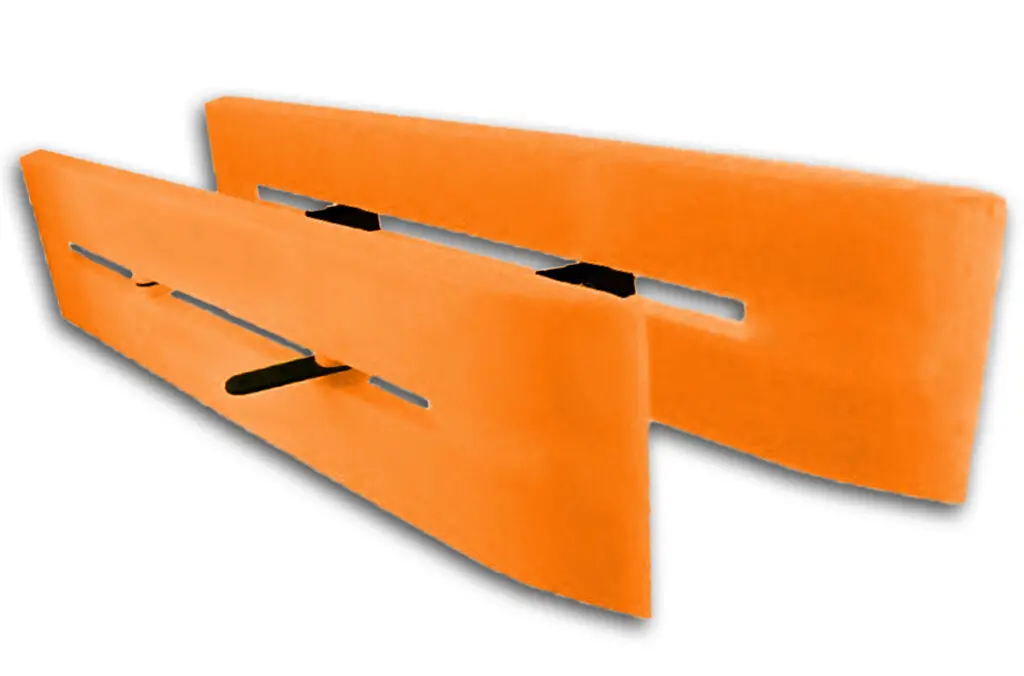
The left image is an inline planer board. The line from the rod attaches to the front clip (closest to the flag) and then to the rear clip which then goes back to the weight and lure. This board is reeled in with the fish.
The right image is a mast style planer board which is set out “one time” attached to a strong mast line which is attached to a mast (fixed post). Fishing lines are clipped on to the mast line and release when a fish bites, allowing for a resistance-free fight.
Both work well.
RODS AND REELS
I’ll start with the rod selection here as it is not as complicated. If you are running inline boards, then you need a beefy rod that can handle the weight of the board pounding in waves. Downrigger action rods are excellent here especially if you already own some for Downrigging. If you need to purchase a rod, there are specialty planer board rods available. Just make sure you get a long rod (8+ feet) and it has a soft “parabolic” action. Do not buy a stiff rod, especially from the tip to the mid-section.
If you run mast style boards, then a medium-heavy walleye rod will do simply fine. Most people that run these boards are already set up with their favourite rigs.
The reel selection here is much more precise than the rod selection. Line counter reels are a must if you want to consistently put fish in the boat. There is a huge difference in fishing 95 feet back vs 195 feet back from your boards. And even more important is the ability to replicate what is working. If you are getting fish at 195 feet back, then you need to stay that distance until the fish stop biting. Then and only then should you try something different.
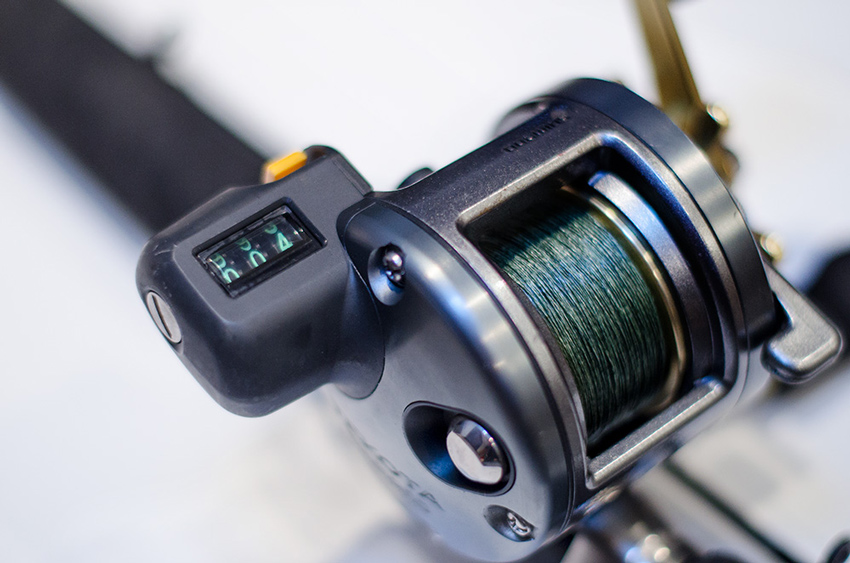
TROLLING SPEEDS
This is something you are going to have to figure out for yourselves. I could give you specific numbers here, but I’d only be looking to BS you. It is all about trial and error. I will say though, a GPS is a must if you want the ultimate in speed control.
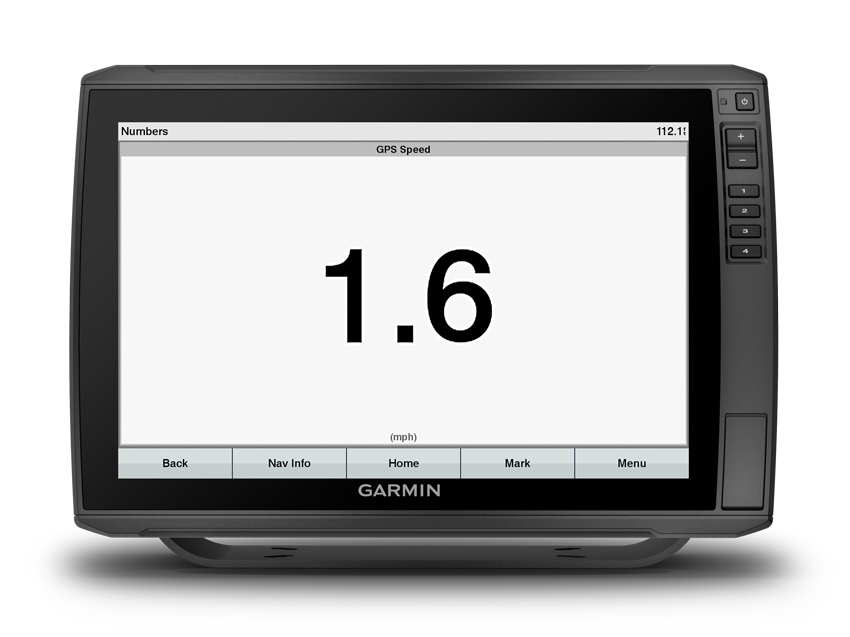
Avid trollers have a few tricks up their sleeves to help get that boat moving at the proper pace.
Drift socks (sea anchors) are the most convenient and economical way to slow down that big 250 horse beast. Running one on each side of the boat can do wonders in slowing the pace.
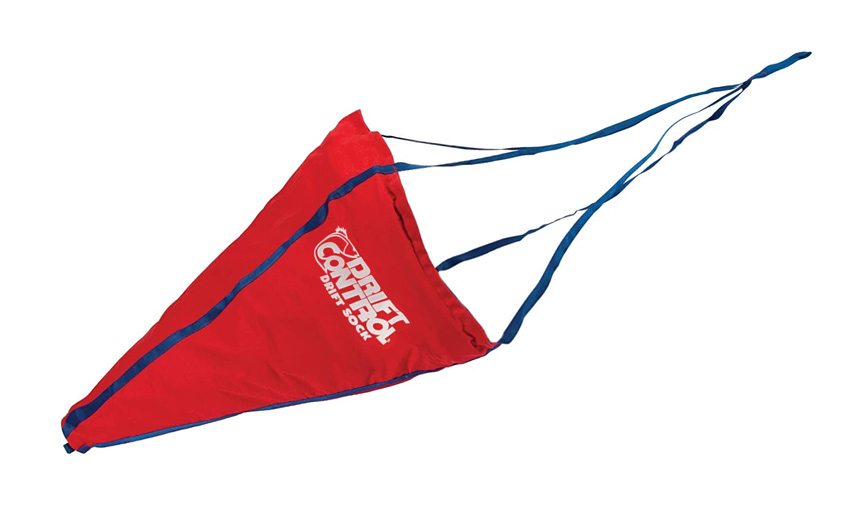
If your boat is equipped with Power-Pole shallow water anchors, then you can add an option called drift paddles. Since our Princecraft has Power Poles installed, we decided to try the paddles last year. They worked perfectly! What a treat to use. The deeper you send them, the slower you will go.
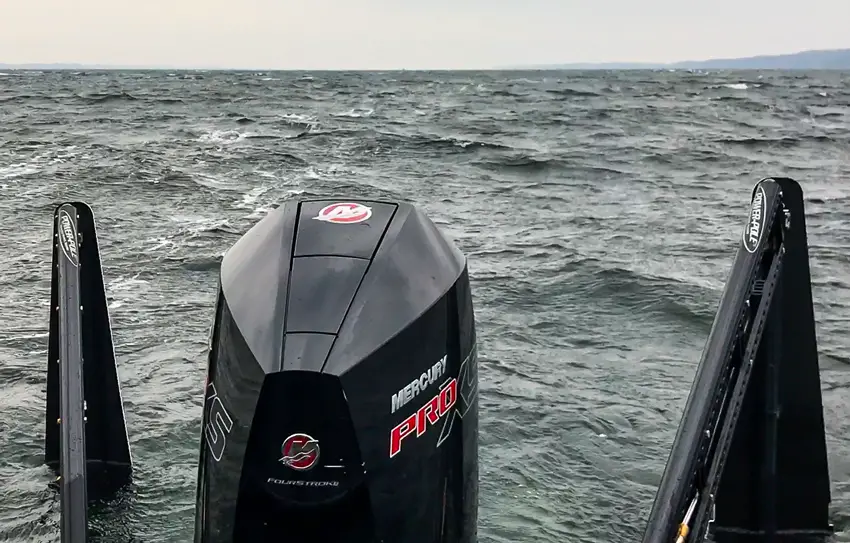
IS IT LEGAL TO RUN TWO LINES?
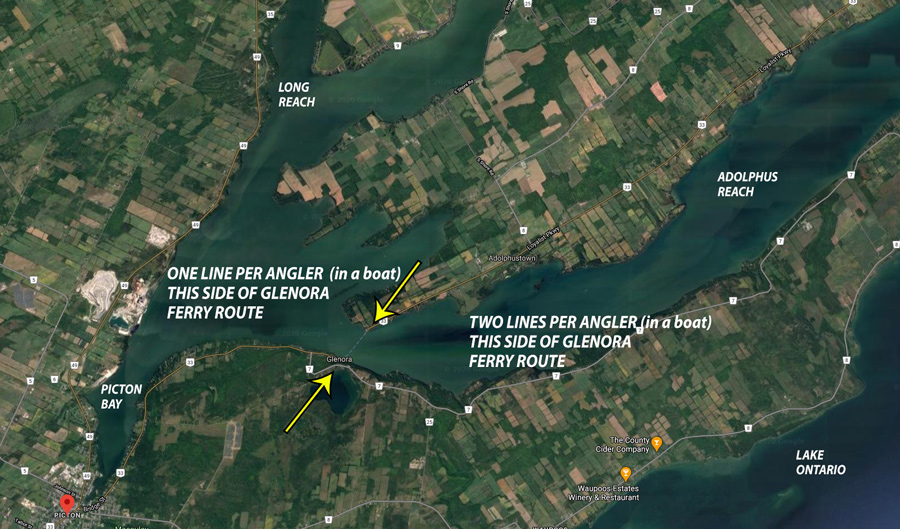
As I stated in the planer board section, anglers can take advantage of a long-time Great Lakes fishing rule in where they can run two lines per person so long as they are in the properly designated area. That area on The Bay of Quinte starts at the Glenora ferry line in the Adolphus Reach. So long as the angler’s lures are in the water, on the Lake Ontario side of the ferry line, 2 rods/lines are permitted per angler.
DON’T HAVE A BOAT? THEN HIRE A GUIDE!
There is a way for anyone to enjoy a chance at a fish of a lifetime and that is to head to the town of Picton in the late fall, and hire a guiding service to help put you on to the possible Walleye of a lifetime. The convenience of this is perfect. You can drive up for a single day on the water or you can spend a night or two in this quaint little town and take in the nostalgia along with some great fishing.
I have personally dealt with Scott and David Walcott of Bay of Quinte Charters, as well as Kevin and Jennifer Lavers of Merland Park Cottages, and both companies, will accommodate you in the fishing as well as a place to stay over.
I will warn you though, this is their busiest time of year, so booking them early is a must.
With Bay of Quinte Charters, you are hiring “the lap of luxury” in both fishing and accommodations. If you need a place to stay, they own the Picton Harbour Inn, a great facility with a small restaurant. As for the fishing they run two amazing boats that almost look like they should be on the BC coast. They’re big. That said, they’re also perfect for that angler that needs to tuck into a heated cabin to warm up, eat lunch or maybe even catch a quick 5-minute nap. When a fish is encountered, Scott or David will bark at you during your slumber and steer you as to what rod is hooked up and how to fight the fish. It truly is luxury.
As for Merland Park, they offer a series of great cottage/cabins (no restaurant, however, Picton has lots) and Kevin runs a more traditional Walleye fishing outfit in that you can hire him and his fully equipped 22’ Walleye tournament boat, or you can rent a boat and head out on your own. If you chose the guided option, Kev will definitely put you onto fish. If you chose the latter, he will direct you to where the fish are currently biting and as well, show you what baits are working best. Either way, you will receive the best information in the area.
There is a third option here as well, a group of guiding businesses that work out of Picton Harbour Inn. In no particular order:
https://www.quintewalleyefishingcharters.com/
https://homewreckercharters.ca/
http://www.bayofquintewalleyefishing.com/
https://www.fishfindercharters.com/
http://www.mealonareelcharters.com/
I BEG OF YOU
The best time to try this crazy fishing scenario is late October and up until freeze-up (usually into December). Yes, it does last this long, I once fished here out of my boat the week before Christmas!
This is where the begging comes in:
Walleye Limit: Sport License – 4 fish and Conservation – 2 fish; not more than 1 greater than 63 cm or 24.8 inches on either license.
PLEASE let all the big fish back into the water. There is no need in this modern-day to keep a trophy-sized Walleye. If you are looking for a wall hanger and happen to land it, take a couple of quick pictures along with a quick length and girth measurement (be fast these fish will perish quickly) and release the mighty beast. Then go online to places like Advanced Taxidermy where they will give you a quote on a replica mount and if you go through with the deal, will have an exquisite piece of art ready for you once done. And the best part is your fish is still alive and probably going to contribute to the next spring’s spawn.
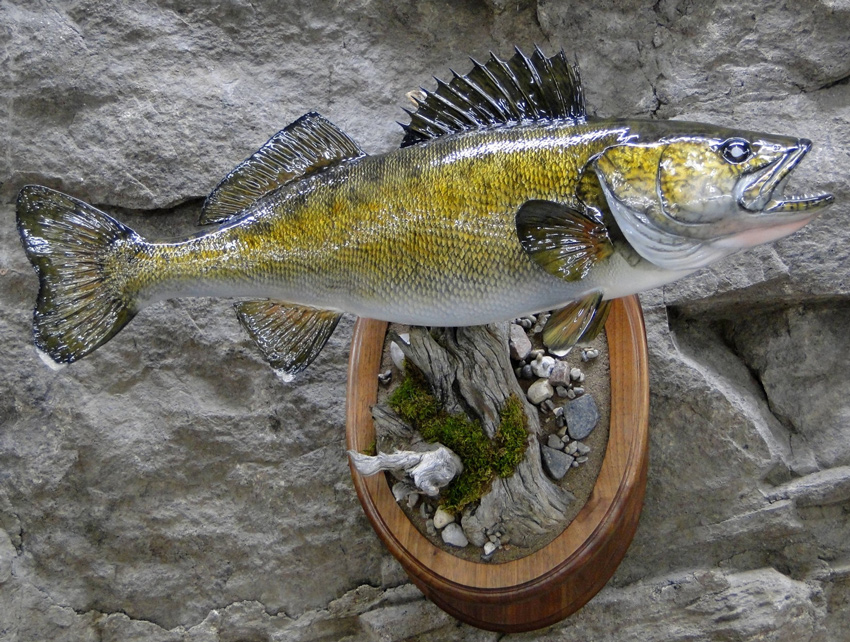
WHERE TO LAUNCH YOUR BOAT
If by chance you have a boat, then the most popular boat launch is right in the town of Picton. It is an excellent launch however it can get slippery if iced over from boats going in and out. Fortunately, regulars there will salt the ramp keeping it operable throughout the late fall. Unfortunately, Picton Bay is the first area to freeze over, so this launch ultimately becomes unusable.
The next best alternative is a small launch on the Kingston side of the Glenora Ferry (opposite the Picton side). Although this launch freezes in as well, it has much easier access to the water you will be fishing. Again, locals keep it in decent shape and they usually run a path of broken ice, which leads to Walleye heaven.
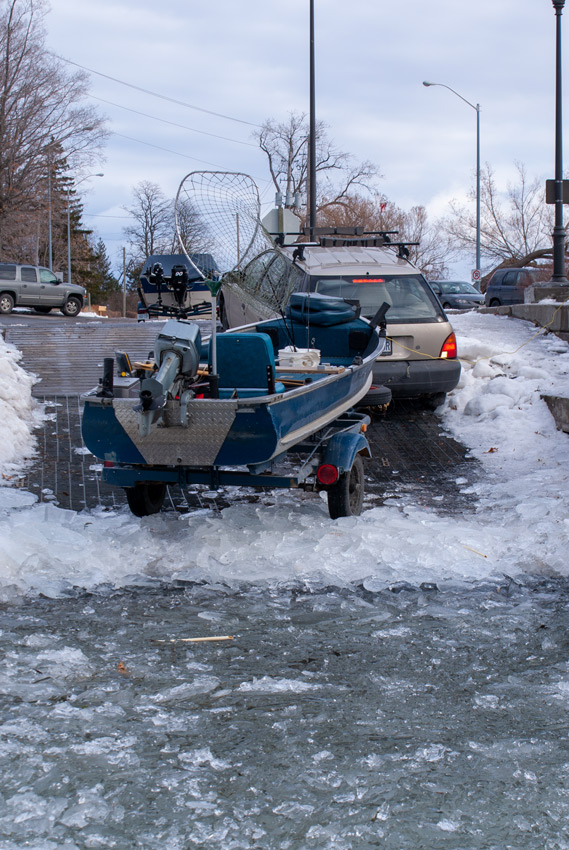
The last option is in the town of Bath, which quite a boat ride from the Ferry area but is still do-able on a nice calm day.
CONCLUSION
The Bay of Quinte in Ontario is without a doubt, one of the best Walleye fisheries in the world. If you can stay on the fish all season long, you will have a tremendous year.
That said, the late-fall Walleye fishery is where Quinte really shines. Numbers of gigantic Walleye have been and will continue to be caught by hard-core anglers braving the elements. It truly is the one spot that a fishing dream “catch” can come true.
If you decide to give it a try, dress warm, fish safely, and be ready to possibly see some of the biggest Walleye you’ve ever encountered.
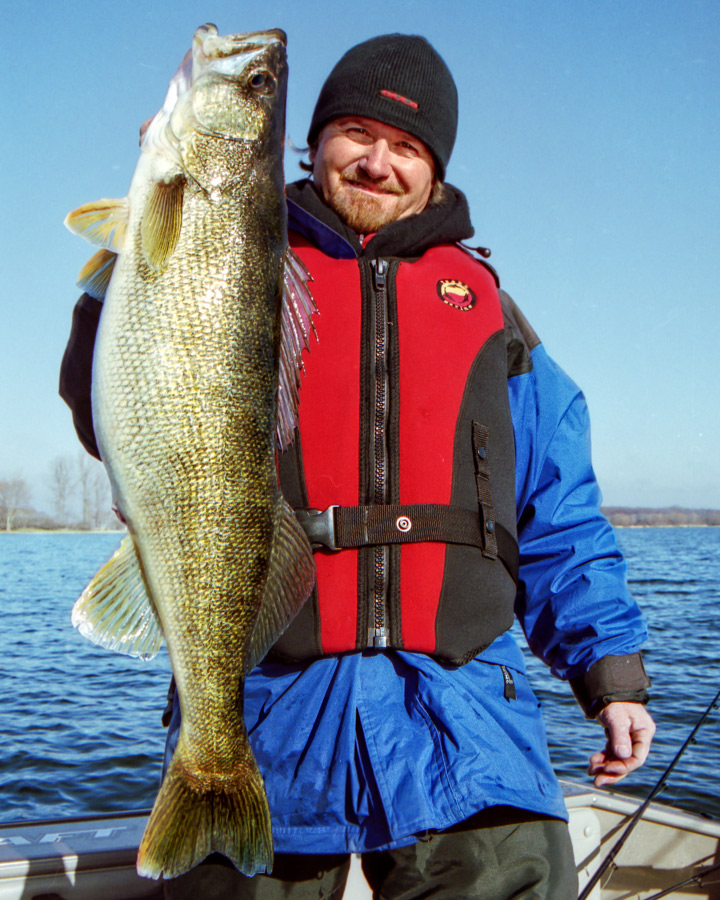
Good luck and have fun!
LINKS OF INTEREST FOR LATE SEASON QUINTE WALLEYE
https://www.ontario.ca/document/ontario-fishing-regulations-summary/fisheries-management-zone-20
A huge jigging fish
A crazy boys weekend





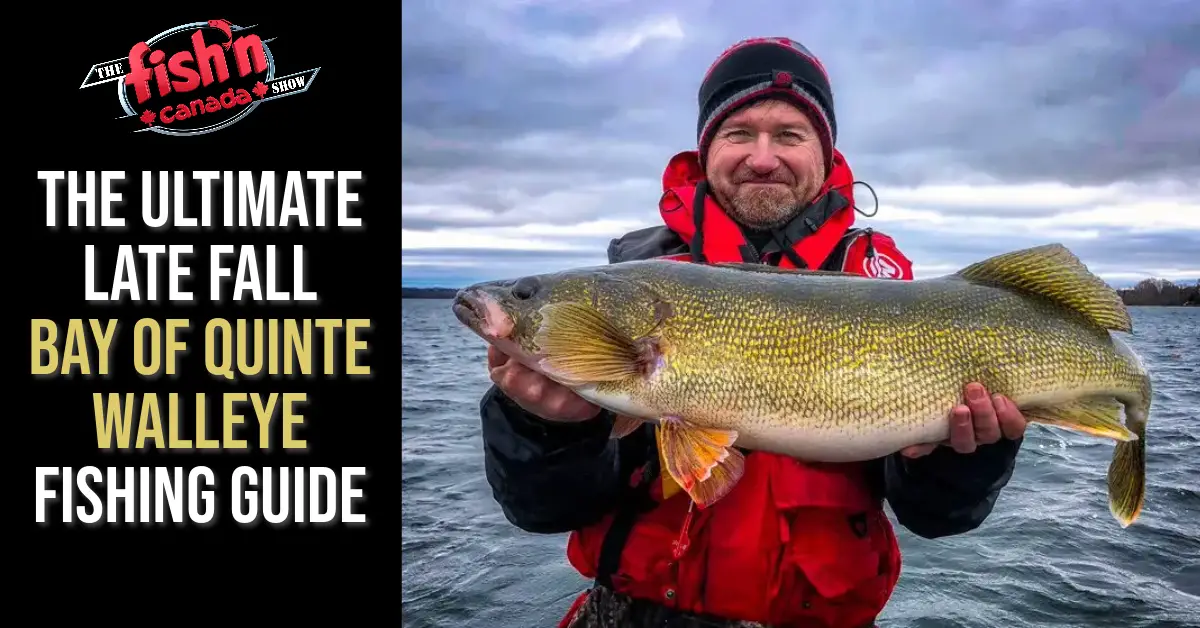

12 Responses
Greetings !!! Pete
I have not visited the Bay of Pigs in about 6 years or so. Mostly because of time restraints but also because things have changed so drastically up there.And now Global warming is going to wreak havock with water temps and we both know how crucial that is to targeting those Big ! Gals on the BOQ. I booked a 2 day charter 3 night stay with Scott and I was pumped !!!! until I read this article about water temps being off as well as the prediction of High winds and Rough waters throughout Oct /Nov .I have had charters cancelled before and it’s a downright bummer when it happens.Hopefully that will not be the case this year.We will be up there on Nov 15 16 17 hope to see you there once again.I have a ? Pete. As kids we used to fish for eyes using Canadian Wigglers.For this years trip I packed several T-60 flatfish single hook models and will tip with 4 inch plastic grub curly tails.I just cannot imagine one of those Big Girls not smacking this set up.What is your take on it ??? Take care and stay safe on the water and hope to see you up at Quinte during our time period.
Best regards
Michael
Hey Michael remember Scott runs huge boats that are heated… conditions are easily dealt with!
Pete, I mean the T-60 Flatfish
Regards
Michael
Pete,in referance to your Hawk Lake article.I watched My Fishing Guru Big AL LINDNER just hammer those big Hawk Lake walleye by way of a Rapala jigging rap.
Regards
Michael
Hey Michael, yeah Jigging Raps are so much fun to use for open water Walleye. As for the big Flatfish, I’ve only used that size for Lake Trout but I can see it working for giant Walleye as well… interesting!!!!
Greetings Pete,
Just thought I would give you an update on my groups trip to the BAY of PIGS.
3 night sleepover 2 day Charter Nov 16-17
with Lt.Dave Walcott.We cannot adequately put into words just how much !!! we enjoyed this man’s company and knowledge for 2 days on the water.Just an incredible soul.
Water temps hovered between 49 + change to 53 + change. Lost a fish that had some serious weight to it,probably could have been my PB, we nailed 2 tens
a few fives and some nice eaters in the 3.5 to 4 lb range.All fish came off of Down Deep RAPS in custom colours that I have never seen before.And yes Purple Purple and more Purple still seems to be the #1 ticket.All fish were nailed just past the Lighthouse up until about 3/4 of the way to the Power Plants.I brought a huge assortment of Reef Runners with me and Dave would not touch them with a 10 foot pole LOL.He does not trust them.Yet every Pig that I nailed up there came off of a Reef Runner except for 1 that hit a Live Target pearch.Like what !!!!! ever happened to classic Walleye slayers like Cordel’s Wally Divers , Wally minnows,
You never hear anybody using them though I did notice a Cordel Rippling Redfin hanging on one of the boat’s rods.
Dave said he loves that lure.Anyhow here is my update and If you should make it up there,Good luck and stay safe on the water.One more thing,kindly please ask your viewers to get more involved in helping the Lake Ontario Management Unit ( Picton ) fill out more Volunteer Angler Diary’s. I am from Montreal so if I help all of the time anglers in Ontario should do so as well.Only takes a little time but goes a long way in helping them out. CHEERS PETE ?
Wow Michael thanks for this, what a fantastic update!
The Walcott boys are such awesome people. Extremely knowledgeable and passionate about fishing (not just Walleye). And those boats are something else eh???
I found it funny that David won’t touch the Runners… that’s hilarious.
Thanks again and Cheers back at cha’!
2 more cents LOL
Why oh Why do anglers shy away trolling for eyes using all black or all white deep divers.Absolute classic Walleye colours.I can spend and entire week in Northern Manitoba with a supply of black curlytails and white curlytails and hammer all species.
I’ll bet you would have a hard time finding an all black or white trolling crank for Walleye. There are some but not many. As you stated above, with all the new “custom” colors plus all the standard’s, nothing is simply black & white any more.
Check out ! Reefrunner 800 series Nurse Betsy and Dr.Dreadfull.Also YO-ZURI Chrystal Minnow Deep Diver pure white.
Yes there boats are awesome.
I have fished several times on
the 26 ft Wooldridge.Nothing written in stone yet,But Scott
more than likely will sell off the 26
and scale down to a 1 boat Charter.I think that running West Lake & Picton Harbour Inn plus a 2 boat charter is beginning to tire them out a wee bit.
Cheers
Rock ’em! Sock ’em! The wife an I have fished the bay of Quinte a few time and no matter from shore or a boat, skinny or deep water, almost everything we threw at them resulted in a hook-up. Trolling was exceptionally responsive. The Walleye smashed most anything that resembled a Lindy Rig. When the bite slowed, jigs were the ticket. Sometimes going deep and long produced a few lunkers. As you say, don’t be afraid to experiment. You just never know what could turn a slow day into a memory of a life time.
You know it Cal, such a great place especially for “biggs”!!